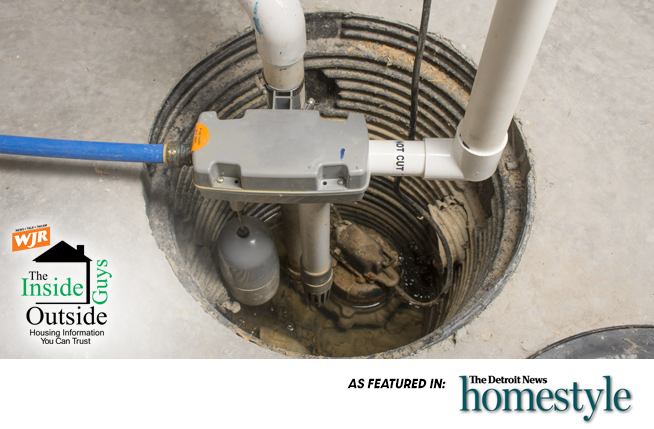
By Ken Calverley and Chuck Breidenstein
DETROIT, November 4, 2021 ~ As the country was settled over a few hundred years, we were primarily a rural and agrarian population.
Houses located in the middle of a hundred acres of land had the same requirements for their inhabitants as those in the cities – shelter, water and waste disposal.
Initially, the waste disposal consisted of outhouses and compost heaps. Families kept them separate due to the need for high quality fertilizers that composting could provide.
But “walking the privies” in the rain and snow was a major inconvenience. When plumbing devices became available for indoor use, a system of waste treatment was developed to allow for sanitary disposal.
The concept of a septic system is fairly basic. Sewage runs downhill through a pipe to a tank where bacteria begin to digest the material. Partially “cleaned” water rises to an outlet which carries the brown water to a leach bed where it is distributed through a manifold of pipes and further digesting takes place while the water either evaporates or moves through soils back to the aquifer.
It is estimated there are more than 1.3 million residential waste disposal systems in Michigan alone, serving over 33% of our residents, while up to 25% of the nation’s population use them for their homes.
But not all systems were created equal and not all are treated as they were intended.
Ideally, a system is designed based on anticipated use and placement.
Use is generally dictated by the number of people that will occupy a home. The historic “touchpoint” for anticipating occupancy is the number of bedrooms in a dwelling with the assumption of two heartbeats per bedroom.
Placement primarily addresses the issue of available space on the building lot, soil configuration, water table and proximity to lakes, rivers, streams, etc.
Unfortunately, a lot of homes and septic systems were built before any universal standards had been created. Many of these were either on farms or proximate to a lake or stream to serve the summer cabin.
On the farms, it was not unusual to see a barrel used for the tank and a leach pipe that simply took the overflow effluent to the nearest ditch or into the field drains.
Systems for cottages and cabins were often no better except the leach pipe often led directly to the adjacent lake or stream. This was so prevalent that as recently as the ’70s some major lakes were so contaminated with septic overflow you could not see your hand in the water.
In one instance, a system design professional was called to look at a hunting cabin. It turned out to be the third generation of a single room cabin that now had five bedrooms and a chef’s kitchen. Unfortunately, the septic system still consisted of a buried station wagon as the “tank” and a leach pipe that exhausted into a nearby ravine.
High water tables, as witnessed by the recent rising of the Great Lakes, will shut down a system. Many motels on the shorelines had to have their tanks pumped weekly just to stay in business these last few years.
Abuse is a huge issue even in our public sewer systems. We use a lot more water than we need to, and we tend to use toilets and garbage disposals as trash receptacles. Most homes with septics should not have a garbage disposal at all.
Heavy use of bleaches, anti-bacterial soaps and chlorinated products to keep our toilets clean can shut down the aerobic action in a tank and in a field. Disposition of grease can clog drains, and the addition of all nature of paper products from wipes to cigarette butts can harm the system.
Another issue is the expansion over time of homes on a system. A home originally built with two bedrooms for four people may now have four bedrooms and a lot more load imposed.
There has been political pressure for decades on the government to take a more active enforcement role in design and maintenance of septic systems. Currently, the MDEQ works with the Water Bureau and county health departments to regulate the industry. Each county tends to have its own idea of what a system should be. While some use mostly evaporative mound systems for leach fields, others may still dictate deep cutting native soils to permeable sand in the fields.
As an infrastructure issue this is on the back burner. In the words of one Industry professional, “the sewer’s ain’t coming” as they might have 30 years ago at the height of urban expansion. The money simply is not there.
There is a lot of sophisticated product and design available even to the extent of systems built to serve entire subdivisions. A few of these have been successfully modeled to create extensive wetlands as the final stage of waste treatment.
But on a house-by-house basis the issue still comes down to regular inspections by a competent authority and the reality that someone is going to have to pay to upgrade all those failing or over-burdened systems. Owners that currently are on a private system should have them inspected and consider pumping the tank on a regular basis while also paying heed to the abuse issues discussed earlier.
A well-designed and utilized system should serve for decades without major service issues.

